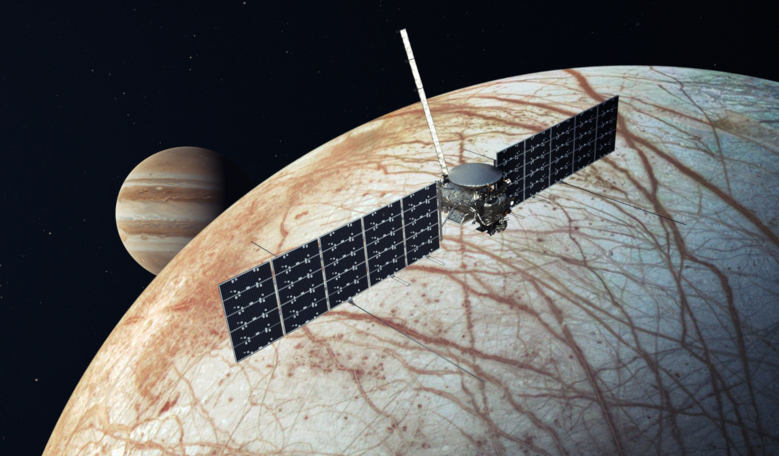NASA has issued a request for information (RFI) for a commercial rocket provider to launch the Europa Clipper, the agency’s long awaited orbiter that will search for signs of life on Jupiter ice-covered moon Europa; a move that signals NASA has overcome a long-standing requirement by US Congress which would have placed lengthy delays on the project’s launch.
Originally scheduled for liftoff in 2023, a date which has now slipped to 2024, US Congress had previously mandated by law that Europa Clipper’s orbiter and a follow-up lander mission had to be launched on NASA’s huge, but problematic Space Launch Systems (SLS) rocket.
However, development on the SLS is behind schedule and when it is finally ready to fly, NASA plans on using the first three SLS rockets produced for its Artemis lunar programme.
As such, an SLS will not be available for the Clipper Orbiter launch until 2025 at the earliest.
With the completion of the Orbiter itself expected in 2023 according to a US Government Accountability Office (GAO) report published in April 2020, this would mean the Clipper would have to be held in storage for at least 18 months, probably longer.
Although this might not seem such a problematic requirement, the cost of storing a Class A payload, a mission-type that the space agency reserves for its highest priority and most expensive missions, is not cheap.
Figures published both in the same GAO document and a NASA Office of Inspector general report indicate that costs involved in the Clipper’s storage amount to an estimated $3 to $5 million per month – a substantial figure which includes fees of $1 million for physical storage; $129 million for workforce and potential staff requirements; $96 million for mission system impact and a change in cruise time to Europa from 2.4 to 3 years.
Funds to the tune of $250 million in reserves were added to the project by NASA last year, to address these storage and related personnel costs, says the report.
A launch using the SLS would have an advantage in that the Europa Clipper could be sent directly to Europa, whereas a later launch window using a commercial launch vehicle would require Mars and Earth gravity assists therefore extending the flight time of the Clipper.
But, says NASA’s inspector general, the agency could save nearly $1 billion if Congress gives it the ability to choose the best launch vehicle for the mission.
“Our May 2019 report highlighted three main differences between launching the Europa mission on an SLS versus a commercial rocket: cost, transit time to Europa, and availability for a 2023 launch. The SLS is the most expensive launch vehicle option by a factor of three,” notes Paul K. Martin, Inspector General on the OIG report.
The much needed flexibility NASA needed in order to use vehicles other than its own to loft Europa Clipper into space, has now appeared in the form of revised wording used in a recent spending bill, which specified that SLS should still be used but only “if available”; a term not seen in past bills.
Taking full advantage of this change in language, the agency is now seeking information about commercial launchers that would be available for a 21-day launch window that runs from 10-24 October, 2024.
"NASA/Kennedy Space Center (KSC) is hereby soliciting information from potential sources in anticipation of a full and open competition for the acquisition of launch services of the Europa Clipper mission," says the request for information. “The launch vehicle shall deliver a minimum 6065 kg Europa Clipper spacecraft (SC) with Mars-Earth-Gravity-Assist (MEGA) trajectory characteristics as follows: C3 value of 41.69km2/sec2 and a DLA range of 30-32 degrees,” it adds.
The RFI is required by law set out by Congress, which specifies that a competitive bid process for the Clipper launch must take place.
With such a heavy payload, at present, there are only a couple of commercial options on the table; a SpaceX Falcon Heavy in its completely expendable configuration, and a ULA Delta IV Heavy.
This latter alternative is somewhat doubtful as a possible contender because ULA are planning to phase out their Delta IV rocket in the next couple of years.
As it is also unlikely that NASA will consider rockets not in service at the moment, and that the agency would like to “begin the procurement process in the next few months”, it would seem there is not a lot of competition in the running at this current time.











